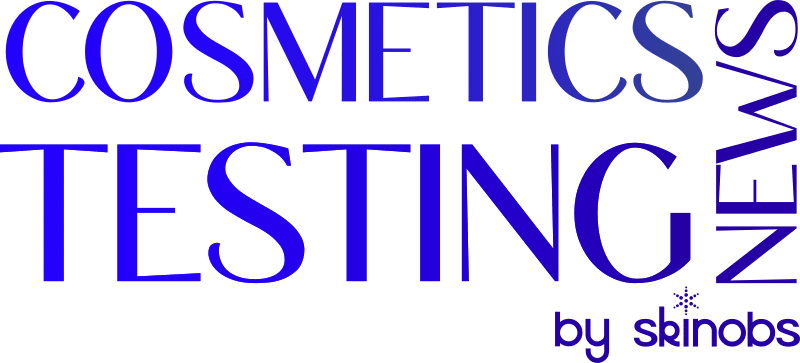In your opinion, what are the reasons for Korean consumers’ interest in skincare products that target radiance?
Korean consumers’ strong interest in radiance-focused skincare is rooted in a combination of cultural values, social trends, and technological advancement.
From a cultural perspective, called “porcelain skin”, flawless skin as clear, smooth and luminous skin has long been associated with health, youth, and refinement in Korea. This traditional ideal has evolved into a modern beauty standard where radiance is seen not merely as a cosmetic attribute but as a reflection of personal care, discipline, and even social status.
From a social and economic perspective, several factors have accelerated the pursuit of radiant skin: the rise of high-definition media that reveals even the smallest imperfections, the influence of celebrities and social media influencers, and the competitive job market where appearance often plays a decisive role. These dynamics have increased consumer willingness to invest in advanced skincare products and treatments.
From a technological perspective, Korea’s leadership in cosmetic R&D, combined with the integration of dermatological services, at-home beauty devices, and high-performance formulations, has made radiance-enhancing solutions more accessible and effective than ever before. Moreover, the synergy between K-Beauty and global cultural exports—such as K-Pop, K-Drama, and K-Fashion—has amplified the appeal of “Korean-style radiance” to international consumers.
Ultimately, radiance is valued because it combines visible optical qualities—such as brightness, even tone, and smooth texture—with intangible perceptions of vitality and attractiveness. This dual significance explains why Korean consumers consistently seek products that deliver both measurable results and perceptible glow.
Which radiance-related skin signs do you think are most important in Korean beauty?
In the context of Korean beauty standards, radiance is not a single attribute but a multi-dimensional quality that reflects both the optical properties and the overall health of the skin. The most important signs include:
- Luminosity – The skin’s ability to reflect light evenly, creating a bright and healthy glow without excessive shine.
- Smoothness – A refined surface texture that minimizes visible pores, lines, or irregularities, enabling a more uniform light reflection.
- Even Tone – Consistent coloration across the face, free from blotches, hyperpigmentation, or redness.
To accurately assess these signs, objective measurements are essential. Instrumental methods—such as glossmeters, chromameters, and high-resolution imaging systems—can quantify parameters like gloss, brightness, transparency, and hydration. These should be complemented by expert visual assessments and structured consumer self-evaluations to capture perceptual dimensions of radiance.
Importantly, in Korean beauty culture, radiance is viewed as an indicator of meticulous self-care and internal vitality, not just surface appearance. Therefore, evaluation must address both the scientific measurements and the emotional impact the skin conveys.
In the context of Korean skincare, what differences would you make between the different claims related to skin radiance: radiance of the complexion, gloss, evenness of the complexion?
While radiance, gloss, and evenness are often discussed together, they represent distinct yet interrelated dimensions of skin quality:
- Radiance of the complexion – The overall impression of brightness and vitality, perceived as light emanating from within the skin.
- Gloss – Surface-level light reflection, producing a smooth and polished look; excessive gloss, however, can be mistaken for oiliness.
- Evenness of the complexion – Uniformity in skin tone and texture, free from visible discolorations, blemishes, or surface irregularities.
From a dermatological perspective, radiance is a combination of internal luminosity (influenced by skin transparency, hydration, and dermal light scattering) and external uniformity (determined by surface texture and pigmentation patterns). Gloss is a purely surface phenomenon, while evenness requires consistent tone across a larger facial area.
In claim substantiation, each dimension should be evaluated with appropriate instruments—for example, glossmeters for surface shine, chromameters for tone measurement, and high-resolution imaging for texture analysis. By isolating and measuring these attributes separately, it becomes possible to make more precise and credible product claims.
How do you think in vivo evaluation of this claim should be conducted by testers?
In my view, an in vivo evaluation for a radiance claim should be designed to meet both scientific rigor and ethical compliance.
From a technical perspective, the study should combine objective measurements—such as gloss, brightness, transparency, and hydration—using standardized devices (e.g., Glossmeter; Delfin, Finland, Skin Glossymeter GL200; C+K, Germany, SAMBA FACE; Bosa Nova, USA, skin transparency (TLS 855 Diastron Ltd., UK)) with subjective self-assessments to capture perceived changes. All tests must be performed under controlled lighting and environmental conditions to ensure reproducibility.
From an ethical standpoint, the protocol should receive prior approval from an Institutional Review Board (IRB) or equivalent ethics committee. This ensures participant safety, informed consent, and transparency regarding any potential adverse effects. Even for cosmetics, applying internationally recognized guidelines such as ISO 14155 for clinical investigations is recommended to reinforce credibility.
Additionally, to increase global applicability, the participant pool should include diverse skin types and ethnic backgrounds, reflecting variations in how radiance is perceived and measured.
Finally, I believe that the most credible in vivo evaluation is one that integrates scientific accuracy, participant safety, and regulatory compliance. This approach not only substantiates the claim but also builds trust with both consumers and the scientific community.
What in vivo methods do you think are best suited to evaluating in vivo claims relating to the effects of cosmetic products on skin tone?
For skin tone evaluation, the most reliable approach integrates objective instrumental analysis with perceptual assessment. Skin tone is multi-faceted, encompassing brightness, uniformity, and pigmentation balance. To capture these dimensions, I recommend:
- Instrumental Colorimetry – Devices such as Chromameter (Konica Minolta, Japan) and Mexameter (Courage + Khazaka, Germany) can quantify melanin index, erythema index, and overall brightness (L* values).
- High-Resolution Imaging & Analysis – Systems like VISIA (Canfield Scientific, USA) or ANTERA 3D (Miravex, Ireland) can objectively assess pigmentation patterns, spot density, and surface texture.
- Large-Area Assessment – Expanding measurement beyond small sample points to analyze broader facial regions, processed with advanced image-analysis software to evaluate tone evenness.
- Expert Panel Grading – Visual grading by trained dermatologists or cosmetologists adds qualitative insight, complementing instrumental data.
Equally important is ensuring diversity in participant selection, reflecting different ethnic backgrounds and skin types to account for variations in how tone and radiance are perceived.
Additional aspects of skin radiance research that deserve attention
The future of skin radiance research lies in bridging molecular-level insights with visible consumer outcomes. Radiance is influenced by cellular mechanisms within keratinocytes, melanocytes, and fibroblasts, and understanding these processes can lead to more targeted formulations.
Key research directions include:
- Biomarker Identification – Studying melanin regulation, Extracelluar matrix (ECM), collagen synthesis, hyaluronan synthase (HAS), and heparin-binding epidermal growth factor (HB-EGF) to establish molecular indicators of radiance.
- Genomic and Proteomic Profiling – Mapping mRNA and protein expression changes related to pigmentation disorders, including hyperpigmentation, post-inflammatory pigmentation, and freckles.
- Advanced Skin Models – Employing 3D skin culture systems and reconstructed human epidermis to simulate realistic skin environments and study intercellular communication.
- Translational Correlation – Ensuring that in vitro findings translate into measurable in vivo results, validated through clinical testing and consumer perception studies.
Ultimately, meaningful innovation in radiance enhancement will depend on an integrated approach—combining rigorous scientific validation, ethical testing, and formulations that deliver both measurable improvement and perceivable beauty benefits. Also, I think that skin radiance must be crucial part of “skin quality” parameters, concepts, definitions, measurement and treatment options in cosmetics.
About Bum Chun Lee
Dr. Bun chun Lee is currently working as the R&D Director and the CEO of Hue&Skin Co., Ltd. in Seoul, Korea. He got a Ph.D. in Microbiology and Biotechnology from Kon-kuk University, Korea, and studied obesity as a visiting scientist from Dalhousie University, Canada. He joined Hanbul Cosmtetics Co., Ltd. in 1992, and developed Maitake mushroom exopolysaccharide using mushroom fermentation process and got a Dong-Am Great award in 2006. He worked for Hanbul until 2007, moved over to Morechem Co., Ltd. and Ellead Co., Ltd. as Clinical R&D Director, and finally founded Hue&skin Co., Ltd. in 2014. His research is mainly focused on biotechnology application in cosmetics, serving in consulting member of The K Beauty Science in Korea, committee member of Cosmetics and Surfactant in Korean Standard Quality Agency of Korea, IRB Chairman of Korea Dermatology Research Institute and director of Journal of Cosmetic Scientist of Korea.





